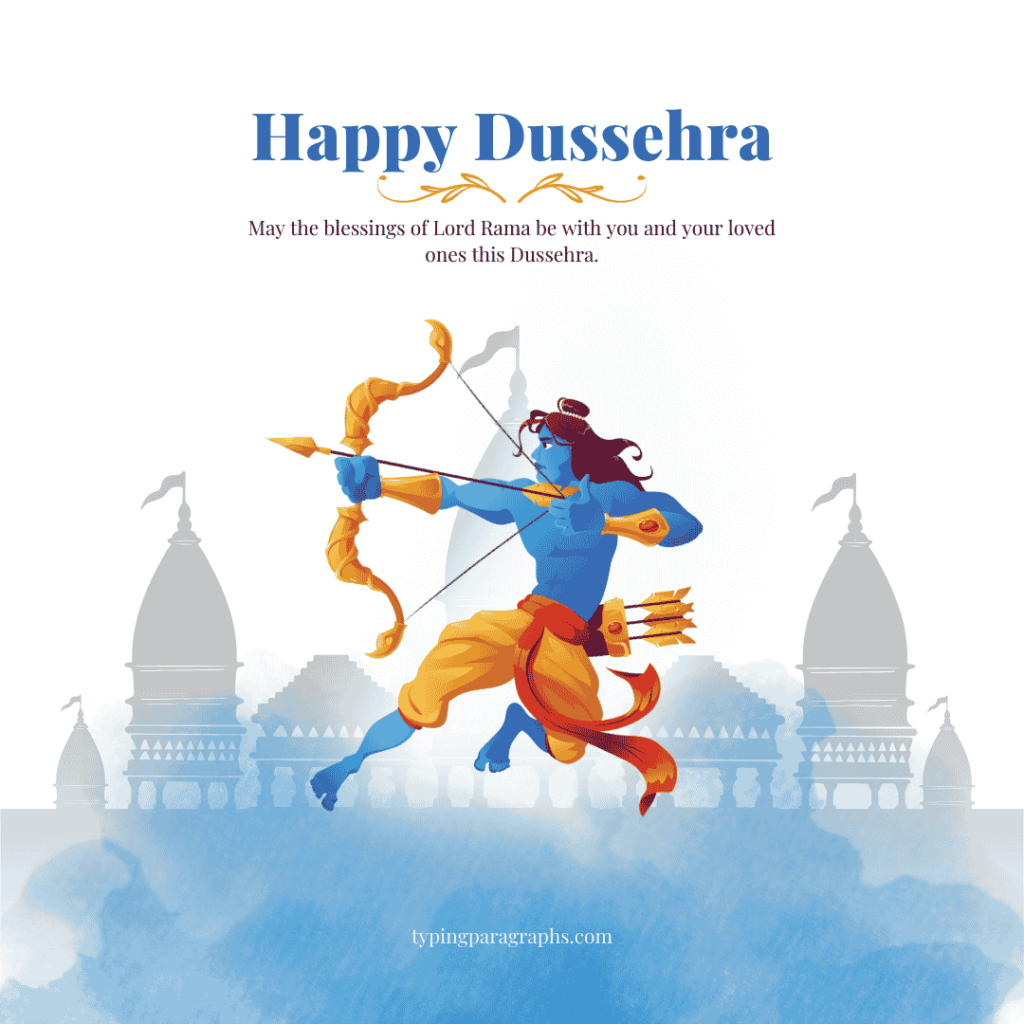“Dussehra: Commemorating the Triumph of Virtue and Justice over Vice and Injustice”

You can copy this text, paste it into Notepad, save it, Check out
Dussehra, also known as Vijayadashami, is one of the most significant and revered festivals in the Hindu calendar. It marks the culmination of the nine-day festival of Navaratri and commemorates the victory of good over evil. Rooted in mythology, tradition, and religious fervor, Dussehra holds profound cultural and spiritual significance for millions of Hindus worldwide, symbolizing the triumph of righteousness, virtue, and justice over vice, ignorance, and oppression.
The origins of Dussehra can be traced back to Hindu mythology, particularly the epic Ramayana, which narrates the tale of Lord Rama’s epic battle against the demon king Ravana and his eventual triumph over evil. According to legend, Ravana, the powerful and tyrannical ruler of Lanka, abducted Lord Rama’s beloved wife, Sita, and held her captive in his kingdom. In a daring rescue mission aided by an army of monkeys and his loyal devotee Hanuman, Lord Rama waged a fierce battle against Ravana and his demon forces, ultimately defeating the evil king and rescuing Sita. Dussehra commemorates this victory of good over evil and the restoration of righteousness and Dharma (righteousness) in the world.
Preparations for Dussehra begin weeks in advance, as communities and households across India come together to clean and decorate their homes, temples, and public spaces with colorful banners, festive lights, and elaborate decorations. The streets come alive with vibrant processions, cultural performances, and theatrical reenactments of scenes from the Ramayana, depicting Lord Rama’s heroic exploits and his allies’ brave deeds in the battle against Ravana. Temples dedicated to Lord Rama are adorned with flowers, garlands, and offerings, as priests perform special ceremonies and rituals to invoke the blessings of the divine and seek victory over evil.
The central ritual of Dussehra is the performance of Ramlila, a dramatic reenactment of the Ramayana, which is staged in towns and villages across India with great pomp and splendor. Professional and amateur actors portray the characters of Lord Rama, Sita, Lakshmana, Hanuman, and Ravana, bringing to life the timeless tale of love, courage, and sacrifice. The Ramlila is accompanied by music, dance, and elaborate costumes and sets, captivating audiences of all ages and backgrounds and instilling a sense of awe and reverence for the epic saga of Dharma.
Another iconic aspect of Dussehra is the tradition of burning effigies of Ravana, Meghnath, and Kumbhakarna, which symbolize the victory of good over evil. Giant effigies of the demon king and his cohorts are erected in public spaces, where they are filled with fireworks and combustible materials and set ablaze amidst cheering crowds and festive revelry. The burning of the effigies symbolizes the destruction of negativity, ignorance, and darkness from our lives and the triumph of virtue, wisdom, and light.
Dussehra is also a time for spiritual reflection, self-discipline, and renewal, as devotees undertake vows of fasting, prayer, and penance to purify their minds, bodies, and souls. Many Hindus observe Navaratri, which is nine days of worship and devotion dedicated to the divine feminine energy symbolized by Goddess Durga and her various manifestations. Each day of Navaratri is dedicated to a different form of the goddess, culminating in the ninth day, known as Mahanavami, which signifies the victory of Goddess Durga over the buffalo demon Mahishasura. Devotees offer prayers, perform rituals, and recite hymns and mantras to honor the goddess, seeking her blessings for protection, prosperity, and spiritual enlightenment.
In addition to its religious and cultural significance, Dussehra is celebrated as a time of joy, merriment, and camaraderie, as people exchange gifts, greetings, and sweets with friends, family, and neighbors. Community fairs, carnivals, and markets are organized in towns and cities across India, offering a plethora of food stalls, games, rides, and entertainment options for people of all ages. It is a time for reunion, reconciliation, and forgiveness, as old enmities are set aside and new bonds of friendship and solidarity are forged.
The significance of Dussehra extends beyond the realm of religion and tradition, encompassing broader themes of social justice, moral righteousness, and the struggle against tyranny and oppression. It serves as a reminder of the eternal battle between good and evil, light and darkness, and the inherent human quest for truth, justice, and freedom. Dussehra inspires individuals to uphold the values of honesty, integrity, and compassion in their lives and to confront injustice and wrongdoing with courage and conviction.
As the festivities of Dussehra draw to a close, families gather together to exchange blessings and good wishes for the coming year, expressing gratitude for the blessings of health, happiness, and prosperity bestowed upon them. The burning embers of the effigies of Ravana serve as a poignant reminder of the transience of worldly power and the inevitability of divine justice, urging devotees to cultivate humility, gratitude, and spiritual wisdom in their lives. With hearts filled with joy and minds illuminated by righteousness, Hindus bid farewell to Dussehra, carrying the timeless message of hope, courage, and triumph over adversity it embodies.
In conclusion, Dussehra is a festival celebrating the eternal victory of good over evil and the triumph of virtue, justice, and righteousness in the world. Through its rituals, traditions, and festivities, Dussehra inspires individuals to strive for excellence, uphold moral values, and confront challenges with courage and conviction. It is a time for reflection, renewal, and rejoicing as Hindus worldwide come together to honor the timeless legacy of Lord Rama and the enduring triumph of Dharma.”


One Comment